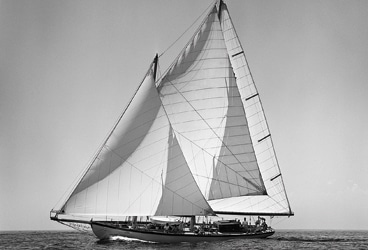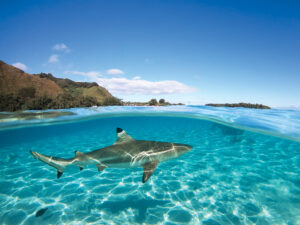
Year in and year out, there may be more fearsome and daunting bodies of water than the Tasman Sea, the broad expanse of blue aqua separating New Zealand and Australia known to sailors in those lands as “the Ditch.”
Personally, and thankfully, I’m not aware of such waters. Three of the most harrowing days of my sailing life happened in the seaway named for Dutch explorer Abel Janszoon Tasman, who left quite a legacy. Centuries later, the mere mention of his name will roil the guts and serenity of many mariners, me included. That’s why, in early June, amid the first reports that a classic 70-foot schooner called Nina was under siege in a savage Tasman blow, my immediate reaction was “uh-oh.”
Here in New England, where this gorgeous Starling Burgess design was built and launched in 1928, for many decades the long-legged Nina was a familiar and formidable presence. The blue-blooded mahogany beauty won major races early and then often, beginning with a 1928 transatlantic contest from New York to Spain, followed by victory in the famous Fastnet Race that same summer. Remarkably, by 1962 she was still going strong, winning the Newport-Bermuda Race under the command of the former commodore of the New York Yacht Club, where she was once the flagship.
More recently, she became an all-oceans cruising boat owned by a vastly experienced Florida sailor, David Dyche, who was in the midst of an ongoing circumnavigation with his family and some friends when they set off from New Zealand bound for the Aussie port of Newcastle in late May.
The Tasman, of course, knows nothing of families or history. May is also the onset of winter in the Southern Hemisphere. Frankly, there’s never a “safe” month of the year in the deep old Ditch. And second-guessing anyone from afar can be a mug’s game. But in retrospect, setting forth near the darkest season may not have been the wisest play. For yachts can and do simply vanish in the Tasman without a trace.
It happened to the son of a friend of mine, Kiwi yacht designer Paul Whiting, who disappeared at sea aboard his racing sloop, Smackwater Jack, back in 1980. Five more sailors and a half-dozen boats were subsequently lost in the Tasman in the infamous 1998 Sydney-Hobart Race. Both of those deadly incidents, and a handful of others, occurred in mid-summer.
Cyclones and “perfect storms” are sometimes to blame, but so too are the regular “Southerly Buster” cold fronts sweeping up from the frisky Roaring Forties to rendezvous with the warm southbound Australia Current that sweeps down the east coast from the tropics. The intersection of these two natural phenomena can be explosive.
What happened to Nina and her seven crewmembers remains a mystery. According to published reports, the boat’s crew carried a satphone and an EPIRB, and were in contact with shore-side friends and authorities — conditions were bad and getting worse, and their storm sails were “shredded” — until June 4, when communications ceased. New Zealand rescue services launched a massive air search, eventually canvassing more than 700,000 square nautical miles. It proved fruitless, and was called off in early July.
Of the many reasons we go to sea, one is surely adventure, a definition for which is “a journey with an uncertain outcome.” For me, the uncertainty of what lies beyond that next wave, or that new beach, has always been part of the allure. But the outcome for Nina proved to be the worst imaginable. Offshore sailing can be a high-risk, high-reward endeavor. In Abel Tasman’s dangerous sea, flanked by two of the sailing world’s greatest destinations, it just seems more so.
Herb McCormick is CW’s senior editor.








